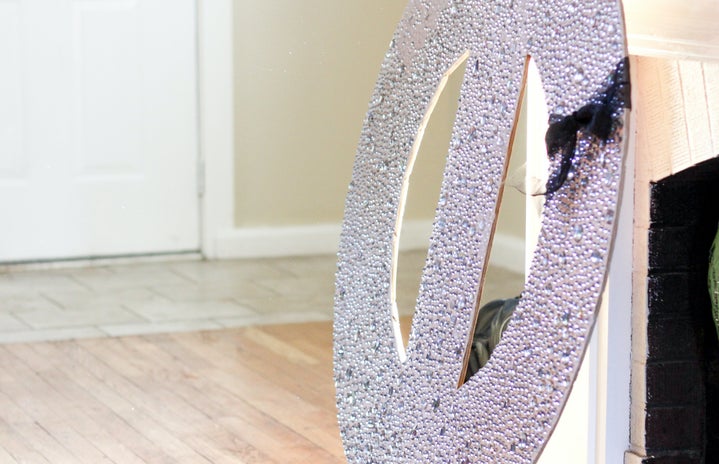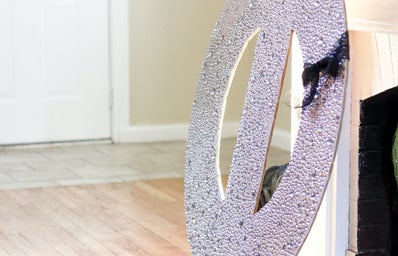We’ve all heard of the expression, “the good old days,” which tends to be referenced most when recalling a simpler time. The college days of many Cornellian mothers were accurately summarized by this expression. Hair was bigger, the drinking age was lower, and planning for social events was a breeze. Two of the most notable differences between the Cornell that our mothers experience and the Cornell that current women experience are the changes that have been made to the Greek system and to Slope Day.
Back in the good old days, our mothers who were interested in participating in Greek life were contacted by a member of a sorority and were invited to attend a “rush party” (the equivalent of today’s mixers.) The girls were picked up in their dorm rooms by older sorority members and then taken to a sorority house. The following week consisted of the same scene, but a different sorority, allowing the girls to spend a semester getting to know the sisters in the different houses. These rush parties continued every Thursday night of the first semester, allowing the girls to make an informed decision about which house was right for them when January rush rolled around.
Compare this to the current situation. Freshmen girls, as well as sorority women, are under strict orders not to discuss Greek life whatsoever until after the first quarter. Even once second quarter starts, potential new members, or PNMs, are still strictly forbidden from entering a sorority house (even if your biological sister lives there and you need to steal back your favorite sweater.) And don’t even think about raving to a new freshman girl about how great of a fit she would be in your sorority unless you want to be reprimanded for “dirty rushing.”
Finally, rush week rolls around. In our mothers’ day, house tour attire consisted of jeans, sweatshirts, and Timberland boots. Beauty products? Chapstick. Nowadays, girls consult a five-paged manual of attire and grooming do’s and don’ts. This same manual rose to infamy after being leaked to the Huffington Post. Let’s play a quick game of trivia that I like to call: 1980s Rules or Modern Day Rules?
Is satin acceptable for formal, final round attire? The answer in the 1980s? Sure, why not? The answer today, “No one looks good in satin dresses unless it’s from Betsey Johnson or Dolce and Gabbana, you weigh less than 130 pounds, have 3 pairs of spanks on and it’s New Year’s Eve.” (And yes, that is a verbatim quote taken from the leaked Cornell dress code.) Beauty products? Where do I begin…let’s just say that there’s a long list of makeup faux pas that must be avoided at all costs. God forbid your cover up be “too obvious” or your eye shadow too sultry.
Once preference round concluded and bids were handed out, our mothers were summoned to their new homes for a few brief hugs and photos with their new sisters. Immediately following this brief celebration, they were whisked off to a fraternity party to start the real celebration. As one source from the 1980s tells me, “Nothing facilitates sorority bonding quite like chugging jungle juice from a 40 gallon garbage can in a fraternity basement.” Alas, our generation will never experience this firsthand. Nowadays, the current mandate of “dry period” is a foreign concept to our mothers. Under this system, sisters are prohibited from consuming alcohol with one another for the first six weeks of new member period. This is especially “fun” when all the girls show up sober to a mixer, only to mingle with inebriated fraternity brothers…need I say more?
Now, picture a beautiful spring day in 1983. Classes have just ended, and you still have an entire week ahead of you for the sole purpose of preparing for your final exams. Slope day is fast approaching, and everyone is excited about Huey Lewis’ upcoming performance. You and your friends plan out the essentials; namely, who will bring the keg (yes, to the slope), and do we have a vehicle to transport the keg (yes, to the slope), and finally, do we have strong men to help us carry it (yes, up the slope) to finally place it in a nice shady area on, yep, you guessed it, the slope. Second order of business, who is going to bring the crystal lite and vodka? And third, should we bring a blanket or just roll the dice that the ground will be dry enough? All of these were elements of a proper preparation for slope day during its heyday in the mid-1980s.
For those of you who aren’t familiar with the history of modern era slope day, it began in 1979 with an event that was then called Springfest. This event involved live bands playing at the base of Libe Slope and was accompanied by students dancing and partying on the slope itself. In December of 1985, the drinking age was raised to 21 in the state of New York, and Cornell announced that the 1986 Springfest would be held in an enclosed area on North campus. The students mounted an aggressive “Take back the slope” campaign, complete with t-shirts, sidewalk chalking, and signs imploring students to boycott the North campus event and party on the slope instead. Thus, the name “Slope Day” was born. The boycott was so successful that the university has tolerated Slope Day since then. They did little to control the event with the exception of banning beer kegs on the slope in 1990 (RIP.) Restrictive actions began in earnest in 2003 when access to Libe Slope was restricted, requiring students to purchase tickets ahead of time. Needless to say, these restrictions have changed the complexion of the event considerably since our parents’ day.
Today, students are required to obtain a wristband with a unique identification number. The ease of bringing a guest along has also diminished, as students now have to acquire a wristband for their gust after they’ve presented the vendor with proper identification and payment, of course. Today’s fairly standardized concept of pre-gaming for any event was inconceivable for our parents. Since they were legally allowed to consume alcohol at social events, they did so at a pace that the human body was intended to drink at. While beer flowing freely from a truck parked next to Libe slope could seem like a modern day recipe for disaster, one 1980’s participant pointed out, “How drunk could we get off of a few cups of warm beer which were more than fifty percent foam anyways?”
In contrast, twenty-first century Slope Day is largely defined by excessive amounts of pre-gaming, in hopes that the buzz will last students the duration of the concert. Ask any current Cornell student what her experience with slope day has been, and chances are that she’ll have only a faint recollection of which fraternity house she pre-gamed at or who the featured artist was.
Only the strong will survive the full event, which is best exemplified by the rows of cots and Gatorade bottles preemptively lined up outside of Gannett Health Center where EMT’s eagerly await to tend to the fallen. For better or for worse, these vast differences between our mothers’ Cornell experience and our own are the harsh reality of the situation.

